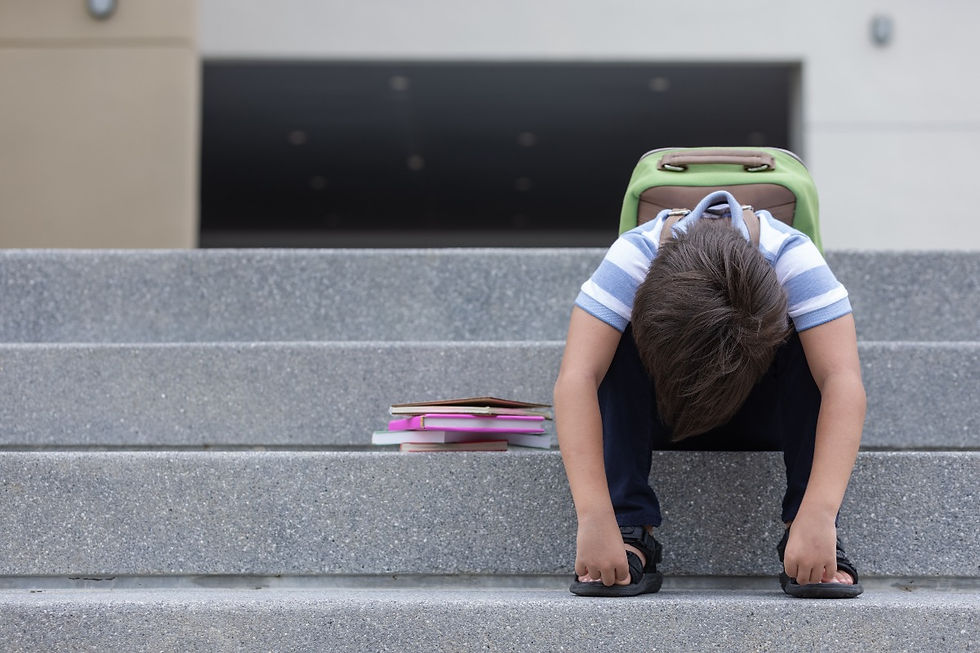Helping Young Children with Transitions: Tools for Smoother Shifts
- Chantal Piercy
- Feb 6
- 3 min read
Transitions can be tough for young children. Moving from one activity to another, leaving a favorite place, or adjusting to changes in routine—like going from one parent’s home to the other—can feel overwhelming. As a child therapist, I often hear from parents who struggle with meltdowns, resistance, or anxiety during these moments. The good news? There are simple tools that can make transitions smoother and help children feel more secure.
1. Visual Timers: Preparing for the Change
Children often have a limited understanding of time, so sudden shifts can feel abrupt and stressful. A visual timer (like a visual timer from amazon, a sand timer, a countdown app, or a kitchen timer) helps them see time passing. When they know what to expect, they feel more in control.
Try this: Set a visual timer 5-10 minutes before a transition (like leaving the playground or finishing screen time) and remind your child, “When the timer runs out, it’s time to go.”
2. Visual Schedules: Creating Predictability
Uncertainty can trigger anxiety in young children. A visual schedule—simple pictures showing their daily routine—gives them a sense of structure. This is especially helpful for transitions between homes, daycare, or bedtime routines.
Try this: Use pictures or a whiteboard to map out their day. A child moving between homes might have a schedule like:🏠 Morning at Mommy’s → 🚗 Drive to Daddy’s → 🏠 Play at Daddy’s house
3. Transitional Objects: Providing Comfort
Children often feel more secure when they have a familiar object to hold onto during transitions. This could be a stuffed animal, a small blanket, or even a special photo.
Donald Winnicott's concept of the transitional object refers to an item, like a blanket or teddy bear, that infants use to provide comfort and security during early development. These objects help bridge the gap between a child's dependence on their caregiver and their growing independence. They serve as a soothing presence, particularly in times of stress, and represent a step in emotional development, allowing the child to manage separation and self-soothe. Over time, the need for the transitional object fades as the child internalizes a sense of security.
Try this: Let your child choose a “transition buddy”—a favorite stuffed animal or small item that travels between homes or accompanies them to new places. This provides emotional security in times of change.
4. Giving Choices & Warnings: Empowering Your Child
Transitions feel easier when children have some control. Giving small choices—like which shoes to wear or which toy to bring—can reduce resistance.
Try this: Give a heads-up before transitions (“In five minutes, we’re leaving. Do you want to hop like a bunny or march like a soldier to the car?”). This makes the shift fun and engaging.
5. Using Connection Before Transitioning: Easing the Shift
Sometimes, children resist transitions because they’re enjoying time with you. A little intentional connection before a transition can make it easier.
Try this: Spend a few minutes cuddling, playing, or reading before saying goodbye. This helps fill their emotional cup and makes separation smoother.

Final Thoughts
Transitions are a normal part of childhood, but they don’t have to be a battle. By using visual timers, schedules, transitional objects, and offering choices, you can help your child feel more secure and prepared for change. With time and consistency, transitions will become easier for both of you!
Have questions or need more personalized support? I’d love to help so email me at chantalpiercya@thruplay.ca —let’s make transitions a little smoother together. 💛




Comments